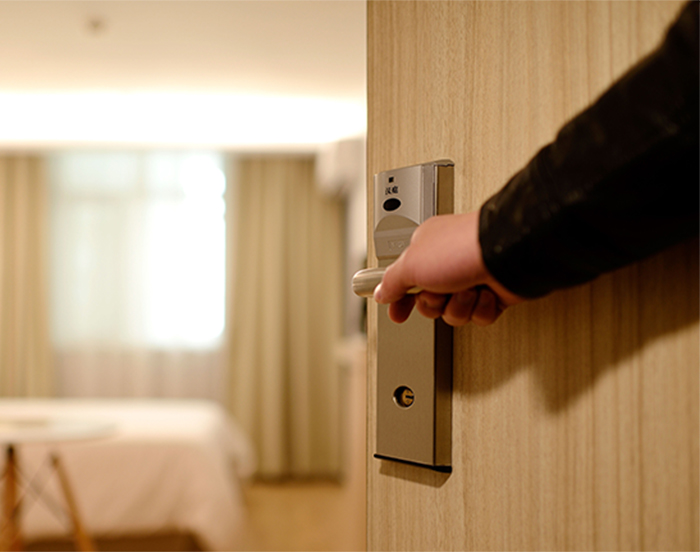
CBRE Reduces Near-Term Hotel Outlook Due to Softer Summer Demand

(Courtesy Pixabay/Pexels.com)
CBRE, Dallas, reduced its forecast for hotel performance this year as weaker-than-expected summer demand resulted in a shortfall in Q2 2023 revenue per available room.
CBRE revised its forecast for 2023 RevPAR to $96.64, up 4.6% year-over-year, but down $1.25 from its previous forecast in May 2023. The revision is predicated on a 70 basis point decrease in expected occupancy compared with the earlier forecast. Average daily rate is expected to increase by 3.6% in 2023, down 10 basis points from the previous forecast.
CBRE said its baseline scenario forecast anticipates 1.6% average GDP growth and average inflation of 4.3% in 2023. Given the strong correlation between GDP and RevPAR growth, changes in the economic outlook will directly impact lodging industry performance.
“An analysis of travel trends suggests that record numbers of Americans are traveling abroad this summer with a particular focus on Europe and the Caribbean. Inbound international travelers to the US are still 27% below their pre-pandemic levels, causing a temporary imbalance in demand,” said Rachael Rothman, CBRE’s Head of Hotel Research & Data Analytics. “As long-haul flights from Asia are added back and visa delays ease, we expect to see an uptick in inbound international travel to the U.S., supporting further demand growth.”
Demand declined 1.2% year-over-year in Q2 2023, the first decline since the post-pandemic recovery began in Q2 2021. ADR growth of 2.6% was in-line with CBRE’s previous forecast. The combination of lower-than-expected demand and in-line ADR growth resulted in muted RevPAR growth of 1.1% in Q2 2023, below CBRE’s forecast of 4.4%.
“Historically, there has been a strong correlation between hotel demand and GDP growth. This makes the decline in demand in Q2 2023 somewhat surprising given the stronger-than-expected GDP growth in the quarter,” said Michael Nhu, Senior Economist and CBRE’s Head of Global Hotels Forecasting. “This disconnect in trends suggests consumer preferences have temporarily shifted, as more Americans are traveling overseas, particularly to Europe and the Caribbean, rather than traveling domestically.”
The best performing location type in the quarter was urban, where RevPAR growth increased 4.7%. The weakest location type was resort, where RevPAR declined 3.7%. Despite the pullback in resorts during the quarter, the location type remains nearly 15% above its pre-pandemic levels. CBRE forecasts that hotel supply will increase at a 1.0% compound annual growth rate over the next five years, below the industry’s 1.6% long-term historical average.
